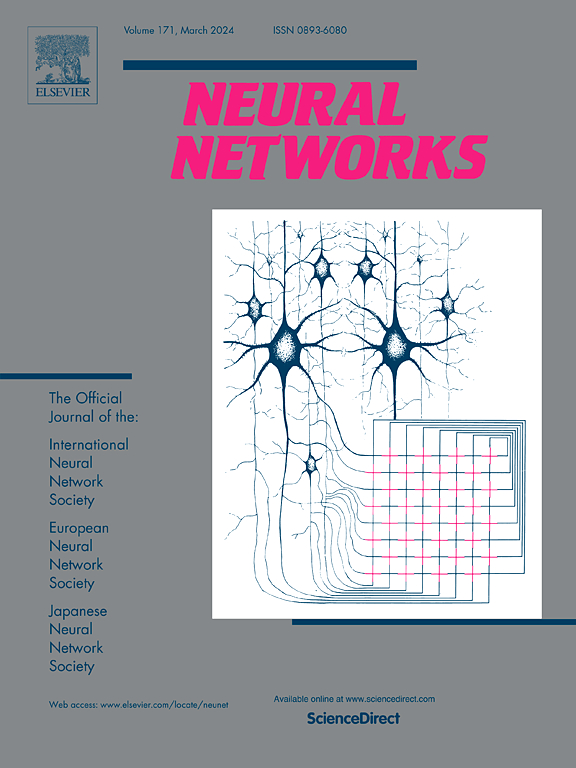CDAFormer: Hybrid Transformer-based contrastive domain adaptation framework for unsupervised hyperspectral change detection
IF 6
1区 计算机科学
Q1 COMPUTER SCIENCE, ARTIFICIAL INTELLIGENCE
引用次数: 0
Abstract
Hyperspectral image (HSI) change detection is a technique used to identify changes between HSIs captured in the same scene at different times. Most of the existing deep learning-based methods can achieve wonderful results, but it is difficult to generalize well to other HSIs with different data distributions. Moreover, it is expensive and laborious to obtain the annotated dataset for model training. To address above issues, we propose a hybrid Transformer-based contrastive domain adaptation (CDAFormer) framework for unsupervised hyperspectral change detection, which can effectively use prior information to improve the detection performance in the absence of labeled training samples by separately aligning the changed and unchanged deference features of two domains. Concretely, the difference features of the two domains are fed into the hybrid Transformer block for preliminary coarse contrastive domain alignment. Then, the positive and negative feature pairs generated from the hybrid Transformer block are prepared for the loss function level fine alignment. Particularly, the domain discrepancy can be bridged by pulling the category-consistent difference feature representation closer and pushing the category-inconsistent difference feature representation far away, so as to maintain the separability between domain invariant difference features. The acquired domain invariant distinguishing features are subsequently fed into the fully connected layers to derive the detection results. Extensive experiments on widely used datasets show that the proposed method can achieve superior performance compared with other state-of-the-art methods.
CDAFormer:基于混合变压器的无监督高光谱变化检测对比域自适应框架
高光谱图像(HSI)变化检测是一种用于识别同一场景中不同时间拍摄的高光谱图像之间变化的技术。现有的大多数基于深度学习的方法都能取得很好的效果,但很难很好地推广到其他具有不同数据分布的hsi。此外,获取带注释的数据集用于模型训练是昂贵且费力的。为了解决上述问题,我们提出了一种基于混合变压器的对比域自适应(CDAFormer)框架用于无监督高光谱变化检测,该框架通过分别对齐两个域的变化和不变的差异特征,可以有效地利用先验信息来提高无标记训练样本的检测性能。具体而言,将两个域的差异特征输入到混合变压器块中进行初步的粗对比域对齐。然后,对混合变压器块生成的正、负特征对进行损失函数级精细对齐。特别地,可以通过拉近类别一致的差异特征表示和远离类别不一致的差异特征表示来弥合领域差异,从而保持领域不变的差异特征之间的可分性。将获得的域不变特征输入到全连通层中,得到检测结果。在广泛使用的数据集上进行的大量实验表明,与其他最新的方法相比,该方法可以取得更好的性能。
本文章由计算机程序翻译,如有差异,请以英文原文为准。
求助全文
约1分钟内获得全文
求助全文
来源期刊

Neural Networks
工程技术-计算机:人工智能
CiteScore
13.90
自引率
7.70%
发文量
425
审稿时长
67 days
期刊介绍:
Neural Networks is a platform that aims to foster an international community of scholars and practitioners interested in neural networks, deep learning, and other approaches to artificial intelligence and machine learning. Our journal invites submissions covering various aspects of neural networks research, from computational neuroscience and cognitive modeling to mathematical analyses and engineering applications. By providing a forum for interdisciplinary discussions between biology and technology, we aim to encourage the development of biologically-inspired artificial intelligence.
 求助内容:
求助内容: 应助结果提醒方式:
应助结果提醒方式:


